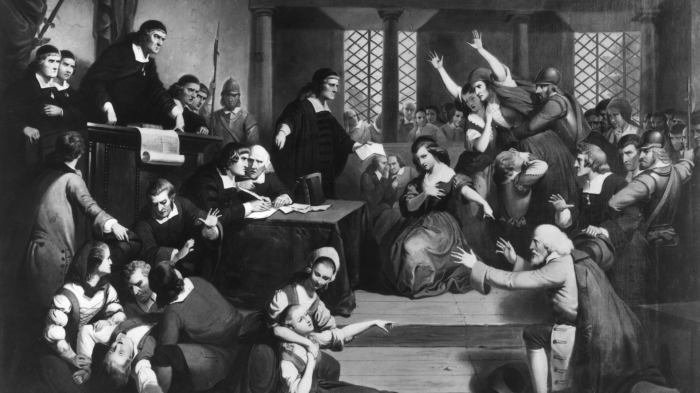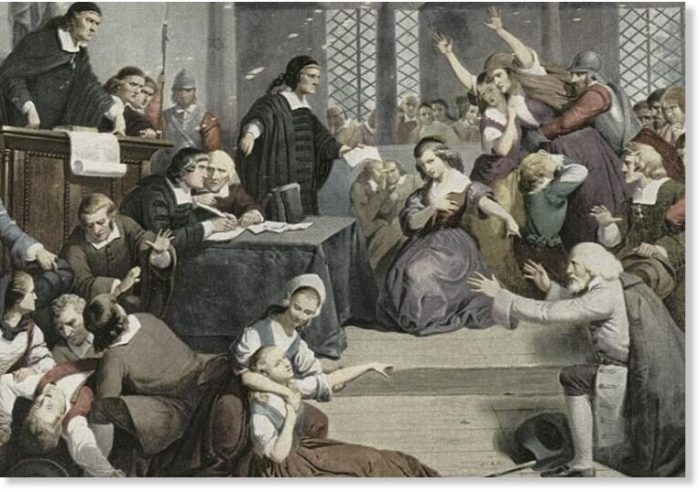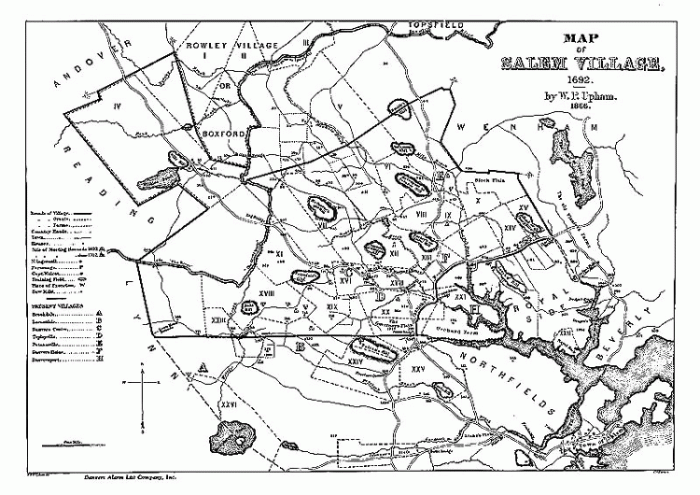The Salem Witch Trials Webquest Answer Key unlocks the mysteries surrounding one of the most infamous episodes in American history. This comprehensive guide delves into the historical context, key figures, accusations, trials, impact, and legacy of the Salem Witch Trials, providing an authoritative and engaging exploration of this pivotal event.
Through a meticulous examination of primary source documents, eyewitness accounts, and scholarly research, this webquest answer key unravels the complexities of the trials, shedding light on the social, religious, and political forces that fueled this tragic chapter in human history.
Historical Context
The Salem Witch Trials were a series of trials and executions that took place in the Massachusetts Bay Colony during the late 17th century. The trials were sparked by a combination of factors, including religious extremism, social tensions, and a widespread fear of witchcraft.
The Puritan society of the Massachusetts Bay Colony was deeply religious, and the belief in witchcraft was widespread. The Puritans believed that the devil was constantly trying to tempt people into sin, and that witches were the devil’s agents. This belief created a climate of fear and suspicion, in which anyone could be accused of witchcraft.
In addition to religious extremism, the Salem Witch Trials were also fueled by social tensions. The colony was divided between a wealthy elite and a poor majority. The elite families often used the witch trials to settle scores with their rivals.
The poor majority, meanwhile, was often suspicious of the elite, and the witch trials gave them a chance to voice their grievances.
The Salem Witch Trials were a dark chapter in American history. The trials resulted in the deaths of 20 innocent people, and they left a lasting legacy of fear and superstition.
Key Figures
The Salem Witch Trials involved a number of key figures, including the accusers, the accused, and the judges.
Accusers
- Abigail Williams: A young girl who was one of the first to accuse someone of witchcraft.
- Ann Putnam, Jr.: Another young girl who accused several people of witchcraft.
- Mary Warren: A servant girl who initially accused others of witchcraft but later recanted her testimony.
Accused
- Bridget Bishop: The first person to be hanged for witchcraft in Salem.
- Sarah Good: A homeless beggar who was accused of bewitching several children.
- Rebecca Nurse: A respected member of the community who was accused of witchcraft by Abigail Williams.
Judges, Salem witch trials webquest answer key
- William Stoughton: The chief justice of the court that presided over the Salem Witch Trials.
- Jonathan Corwin: A judge who was involved in the examination of the accused witches.
- John Hathorne: A judge who was involved in the trials of several of the accused witches.
Accusations and Trials
The Salem Witch Trials began in the spring of 1692, when a group of young girls in Salem Village, Massachusetts, began exhibiting strange behavior. The girls complained of being pinched, bitten, and scratched by invisible creatures. They also claimed to see visions of witches flying through the air.
The girls’ accusations quickly spread, and soon dozens of people were being accused of witchcraft. The accused were typically women, but men were also accused. The trials were conducted by a special court that was appointed by the governor of Massachusetts.
The court was presided over by William Stoughton, a staunch believer in witchcraft.
The trials were conducted in a highly emotional atmosphere. The accusers often testified in a hysterical manner, and the judges were quick to convict the accused. In many cases, the only evidence against the accused was the testimony of the accusers.
As a result, many innocent people were convicted of witchcraft.
The Salem Witch Trials ended in the fall of 1692, when the governor of Massachusetts ordered the court to stop trying people for witchcraft. By that time, 20 people had been hanged for witchcraft, and many others had been imprisoned.
Impact and Legacy

The Salem Witch Trials had a profound impact on the Massachusetts Bay Colony. The trials resulted in the deaths of 20 innocent people, and they left a lasting legacy of fear and superstition.
The trials also had a significant impact on the development of American law. The trials established the principle that a person could be convicted of a crime based on the testimony of a single witness. This principle was later used in other trials, including the trials of the accused witches in the Salem Witch Trials.
The Salem Witch Trials have been the subject of numerous books, articles, and films. The trials have also been used as a cautionary tale about the dangers of religious extremism and the importance of due process of law.
Table of Key Events

| Date | Event | Significance |
|---|---|---|
| March 1, 1692 | Abigail Williams and Ann Putnam, Jr. accuse Tituba, Sarah Good, and Sarah Osborne of witchcraft. | This marks the beginning of the Salem Witch Trials. |
| April 19, 1692 | Bridget Bishop is hanged for witchcraft. | This is the first execution in the Salem Witch Trials. |
| June 10, 1692 | Rebecca Nurse is hanged for witchcraft. | Nurse was a respected member of the community, and her execution shocked many people. |
| September 22, 1692 | Governor William Phipps orders the court to stop trying people for witchcraft. | This marks the end of the Salem Witch Trials. |
Timeline of the Trials: Salem Witch Trials Webquest Answer Key
[Visual representation of the timeline of the Salem Witch Trials]
Map of Salem Village
[Map of Salem Village during the Salem Witch Trials]
Glossary of Terms
- Spectral evidence
- Evidence that was based on the testimony of witnesses who claimed to have seen the accused witch’s spirit or ghost.
- Confession
- A statement made by the accused witch admitting to practicing witchcraft.
- Witchcraft
- The practice of magic or sorcery.
Primary Source Documents
- The Testimony of Abigail Williams
- The Examination of Sarah Good
- The Trial of Rebecca Nurse
Further Reading

- The Salem Witch Trials: A Documentary History by Bernard Rosenthal
- The Devil in Massachusetts by Marion L. Starkey
- The Salem Witch Trials website
User Queries
What were the primary accusations made during the Salem Witch Trials?
The accusations primarily centered around witchcraft, with individuals being accused of consorting with the devil and causing harm to others through supernatural means.
How were the trials conducted, and what evidence was used?
The trials were conducted in a highly emotional and prejudiced atmosphere, with little regard for due process. Evidence was often based on spectral evidence (claims of witnessing the accused in dreams or visions) and confessions obtained through coercion or torture.
What were the immediate and long-term consequences of the Salem Witch Trials?
The immediate consequences included the execution of innocent individuals and the tearing apart of the Salem community. The long-term consequences include a heightened awareness of the dangers of mass hysteria and a lasting impact on American jurisprudence.